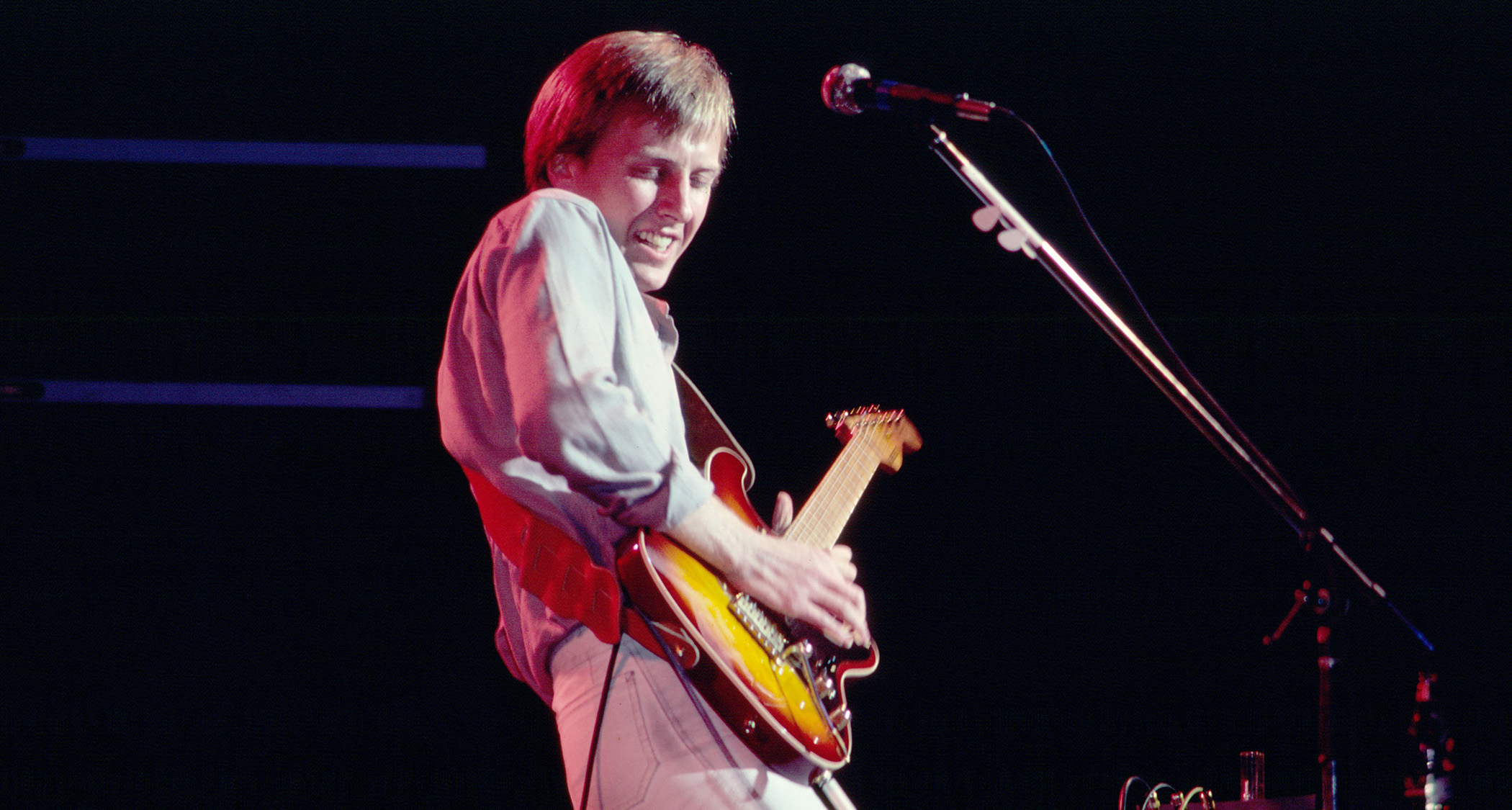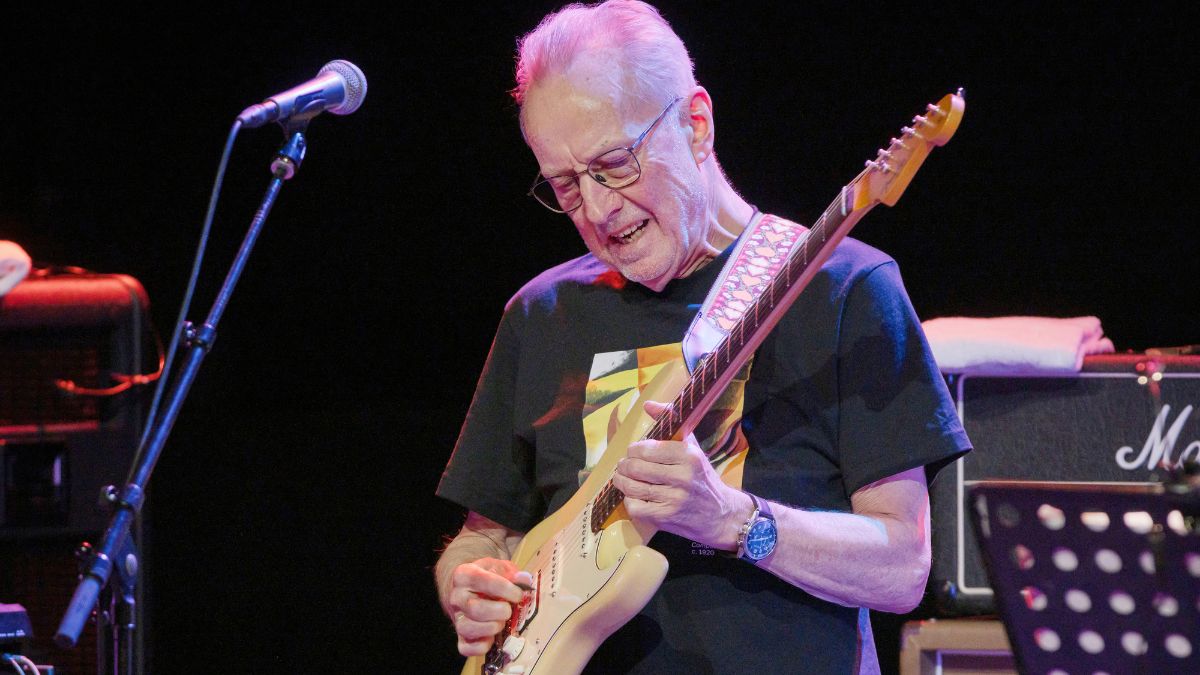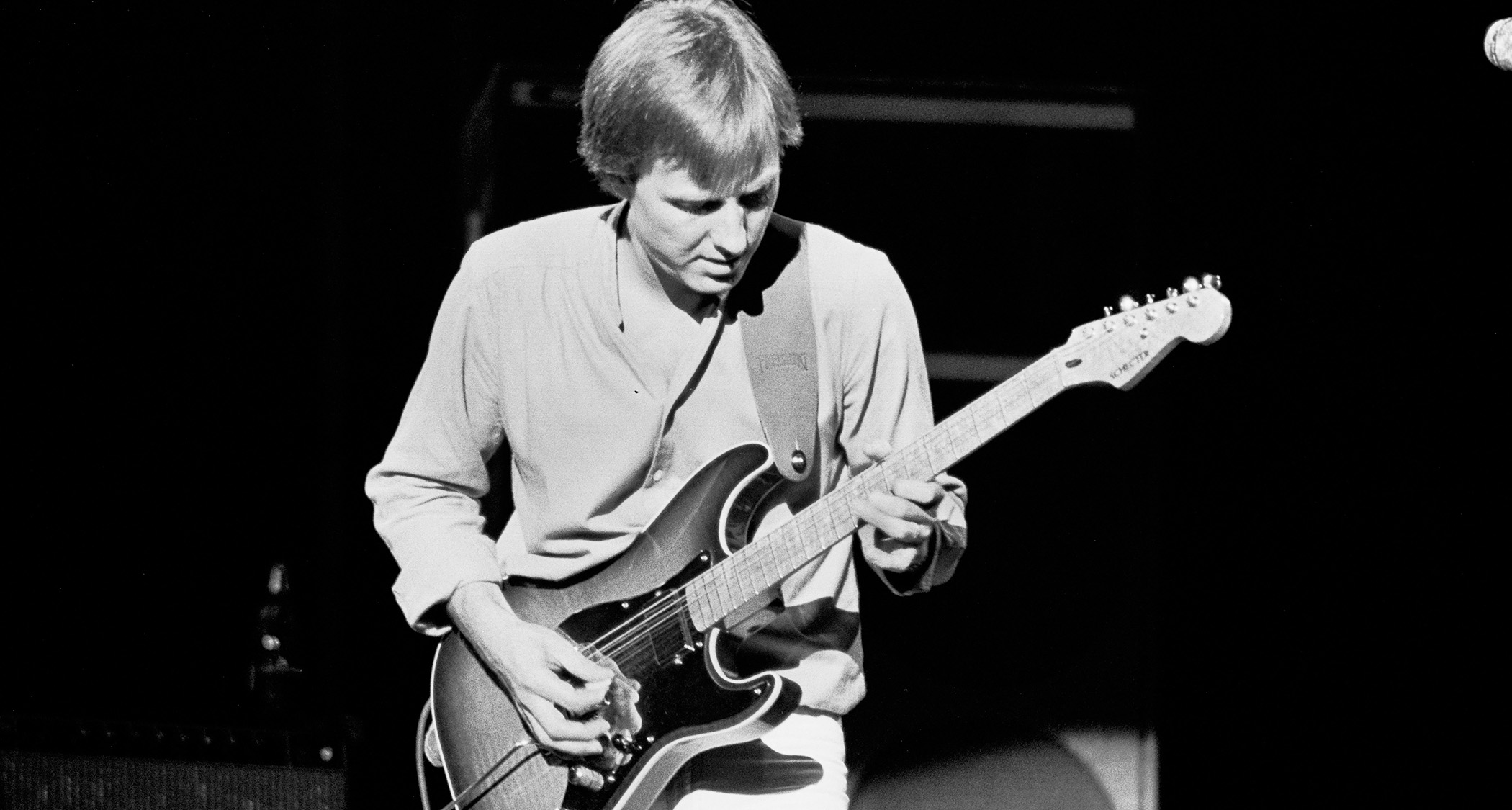“I believe Tommy had lots of songs which were exactly what the band needed. And his style was more akin to Ritchie’s than mine”: Clem Clempson on the return of Colosseum, jamming with Jack Bruce, and that time he auditioned for Deep Purple
Clempson looks back on an epic career that has seen him replace Peter Frampton in Humble Pie, nearly replace Ritchie Blackmore, and tells us he's having more fun than ever with Colosseum

At 75, goldtop-sliming Clem Clempson has seen it all as far as six-strings go. With Colosseum, he aided in two early ‘70s prog-rock gems in The Grass is Greener and Daughter of Time before departing for the ever-bluesy Humble Pie as Peter Frampton’s replacement.
That was a tall order, but Clempson was up for it. The result was albums like Smokin’, Eat It, and Thunderbox, a few of Pie’s most beloved LPs. “The success of Smokin’ was very gratifying,” Clempson tells Guitar World. “It’s always nice to get some kind of seal of approval from the fans.”
Post-Pie, Clempson auditioned for Deep Purple, losing out to Tommy Bolin, and jammed with Jack Bruce for a bit. “That time Jack shows up unexpectedly at my house and asked if I would like to play in his new band with Billy Cobham and David Sancious would have to go down as one of my proudest moments,” he says.
Since the mid-90s, Clempson has been back with Colosseum, who are on the road in support of their latest record, 2025’s XI. But despite Colosseum’s jazz-meets-prog leanings, Clempson doesn’t box himself in.
“I definitely don’t see myself as a jazz guitarist,” he says. “And I’m not simply blues either. Home [as a guitarist] is the result of all the influences I’ve had over the years, from the first time I heard music on the radio, through my classical piano studies, listening to a lot of different guitar styles, up to recently seeing a gig by the amazing Scott Henderson.”
What inspired you to pick up the guitar?
“I started learning piano at age four but became fascinated by the guitar around the age of 10, when I was taken to see the movie Rock Around the Clock, the title track of which has one of the best guitar solos ever!
All the latest guitar news, interviews, lessons, reviews, deals and more, direct to your inbox!
“Soon after that, like so many boys of my age, I fell in love with the Shadows and desperately wanted to get my hands on a guitar, much to the horror of my piano teacher, who warned my parents that it would spell disaster for the career they had planned for me as a classical pianist. I had to wait until I was 14 and was able to raise sufficient funds (£5) for the purchase of a cheap steel-string acoustic.”
You were into blues rock early on. How did that shape the player you ultimately became?
“After going through the Shadows phase, followed by the Beatles phase, I discovered the blues through hearing records by Howlin’ Wolf, Sonny Boy Williamson, Muddy Waters, etc. When I heard what Eric Clapton was doing, all I wanted to do was spend as much time as possible developing the ability to play with that kind of freedom of expression. And to this day, it’s a work in progress.”
Your first proper group was Bakerloo. What was your rig like then?
“Before we changed the name to Bakerloo, we were called The Pinch, and I was experimenting with guitars; I couldn’t afford to have more than one, so I was constantly trading in one guitar for another, starting with an SG Junior and going through various Strats, Telecasters, SGs, and an ES-335.
“Then, my dream came true, and I was offered a [Gibson] Les Paul goldtop, which I’ve played on virtually every record I’ve made from Bakerloo onwards. With The Pinch, I was using a Vox Beatlemaster amp at first, but very quickly switched to a Laney stack, which I continued to use when I joined Colosseum. The only pedal was a [Dunlop] Cry Baby wah-wah.”

What led to your joining Colosseum?
I’d been blown away when I saw Colosseum at Mothers and couldn’t resist the opportunity of playing with them
“Bakerloo had played support in 1969 to Colosseum on a gig in Cambridge. Shortly afterwards, Jon Hiseman contacted me through a promoter in Birmingham called Phil Myatt, who ran a great club called Mothers, and asked me if I would be interested in going down to London for an audition.
“Bakerloo had split up at that point, although I was rehearsing with a new trio comprising myself, Cozy Powell, and Dave Pegg. But I’d been blown away when I saw Colosseum at Mothers and couldn’t resist the opportunity of playing with them.
“So, I learned every track on Those About to Die Salute You and went along to their rehearsal room in Elephant and Castle. The first thing we played was the title track of the album, and after playing that, I was immediately offered the job.”
Was it challenging to transition toward a jazz sound given your blues background?
“Nothing really changed for me; there was no transition to make. I just continued to play my way, which suited Colosseum’s music.”

What gear did you use while recording The Grass is Greener and Daughter of Time?
“For The Grass Is Greener, I was still using my goldtop and Laney rig with the Cry Baby. By the time we recorded Daughter of Time, I also had a nice ES-335, but mostly played the goldtop, and I used an Orange amp.”
What led to your leaving Colosseum and joining Humble Pie?
“Somehow, probably as a result of Colosseum’s touring schedule, that very often would be seven days a week, the band’s creative spark disappeared, and we were struggling to find new material.
“We did come up with some stuff that has recently been unearthed and released by Repertoire Records, but I hated the direction it was going in. I was becoming very frustrated and rather bored with the situation. So, when I was asked to join Humble Pie, I felt the time was right to move on.”
What was the trick to filling Peter Frampton’s shoes?
One of the highlights was spending a very late night with Glenn Hughes and David Bowie. We wrote a song based on a riff I had, and made plans for a new band
“Again, I just continued to play in my own way without ever giving any thought to the fact that I had to fill someone’s shoes. But my style was more blues/rock than Peter’s, I guess; he had a stronger jazz element, and less blues influence in his playing.”
What gear did you use while recording Humble Pie’s Smokin’?
“For Smokin’, I was using Marshall amps, although I again mainly played my goldtop. I also played a white [Gibson] SG Custom and a [Gibson] Flying V on a couple of tracks.”
You auditioned for Deep Purple after Ritchie Blackmore left. How did that go down?
“We had fun jamming for a couple of days and just hanging out; one of the highlights was spending a very late night with Glenn Hughes and David Bowie. We wrote a song based on a riff I had, and made plans for a new band, the idea was to be Mahavishnu Orchestra with vocals.”
![A black-and-white live shot of Steve Marriott [left] and Clem Clempson performing with Humble Pie in 1974](https://cdn.mos.cms.futurecdn.net/qM4SfFpd3L3L8eYjCDZgDB.jpg)
How close were you to getting the gig?
“Although I think everyone enjoyed the playing we did together, it was clear that they didn’t just need a guitar player to replace Ritchie; they needed someone who could also fill Ritchie’s role as the main songwriter in the group. I definitely didn’t see myself as being the right man for the job in that respect.”
Why do you think they chose Tommy Bolin in the end? How might you have approached the gig had you gotten it?
“I believe Tommy had lots of songs which were exactly what the band needed. And his style was more akin to Ritchie’s than mine. I was never into heavy rock as such, although some might consider Humble Pie to be heavy rock. For me, there’s a subtle difference between Pie and bands like Zeppelin, Purple, and Black Sabbath.”

Colosseum II started in the late-70s with Gary Moore. Did you keep up with what they were doing, and why do you think such bluesy players end up in such a jazzy band?
I would say the blues influence in Colosseum is actually greater than the jazz influence!
“I knew Gary, of course, and admired his playing greatly, but I’d moved away from that prog scene and didn’t really listen to Colosseum II much. But I would say the blues influence in Colosseum is actually greater than the jazz influence!”
What led you back to Colosseum in the ‘90s?
“After being on the road from the late-60s, I became very involved in the London session circuit and was very content to spend more time at home. But when we had a Colosseum reunion to celebrate Dave Greenslade’s birthday, the idea of playing together came up almost inevitably.
“And as soon as the initial tentative inquiry went out, it was clear there would be considerable demand for a tour of Europe. So, we agreed to do that, thinking it would be a one-off, but we all had such a great time we just wanted to do it again… and again…"
What are you proudest of when you look back on your career, and what’s next?
“I’ve been incredibly lucky in my career; there are many moments I can look back on with pride and gratitude, firstly, making the Bakerloo album. When I first picked up a guitar, I never dreamed I would reach the level where people would want to buy a record by me.
“Since then, I’ve felt so privileged to find myself playing with people like Colosseum, Humble Pie, Jack Bruce, and many other outstanding and talented musicians. The immediate future will consist of having more fun touring with Colosseum to promote our latest record, XI.”
- XI is out now via Repertoire.
Andrew Daly is an iced-coffee-addicted, oddball Telecaster-playing, alfredo pasta-loving journalist from Long Island, NY, who, in addition to being a contributing writer for Guitar World, scribes for Bass Player, Guitar Player, Guitarist, and MusicRadar. Andrew has interviewed favorites like Ace Frehley, Johnny Marr, Vito Bratta, Bruce Kulick, Joe Perry, Brad Whitford, Tom Morello, Rich Robinson, and Paul Stanley, while his all-time favorite (rhythm player), Keith Richards, continues to elude him.
You must confirm your public display name before commenting
Please logout and then login again, you will then be prompted to enter your display name.





